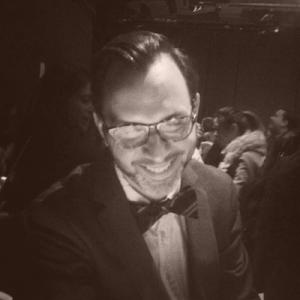Shelley Fox Aarons opens the doors to her Manhattan home
Artful Living
-
Dr. Shelley Fox Aarons
Photo © Kevin Mertens for L'AB/Pamono
-
Tejo Remy "Dark Blue Dragon"
Photo © Kevin Mertens for L'AB/Pamono
-
Photo © Kevin Mertens for L'AB/Pamono
-
Courtney Smith "Telefone"
Photo © Kevin Mertens for L'AB/Pamono
-
Works by Harold Ancart and Kirsten Pieroth
Photo © Kevin Mertens for L'AB/Pamono
-
Bruce High Quality Foundation "Greek-Roman Collection of the MET 12.159"
Photo © Kevin Mertens for L'AB/Pamono
-
Photo © Kevin Mertens for L'AB/Pamono
-
Photo © Kevin Mertens for L'AB/Pamono
-
Terence Koh "My Coffin"
Photo © Kevin Mertens for L'AB/Pamono
-
Photo © Kevin Mertens for L'AB/Pamono
-
Photo © Kevin Mertens for L'AB/Pamono
-
The Manhattan apartment of Philip and Shelley Fox Aarons
Photo © Kevin Mertens for L'AB/Pamono
When Shelley Fox Aarons opened the door to her 41st-floor apartment on Manhattan’s Upper West Side, the first thing I noticed was the view. The east and south walls are entirely glass and give sweeping views of Central Park on one side, and the softly glowing courtyard of Lincoln Center on the other. As dusk began to settle, jumbled pinpricks of light began to appear on the window. At first, I assumed they were simply reflections from inside the apartment. Breathtakingly, they were actually the streetlamps of Central Park’s many winding paths blinking into life, all at once. Seen from so high up, all the spread out lights from all the spread out paths collapsed on top of each other—like a photograph taken with a powerful telephoto lens—creating the illusion of a beautiful bunch of stars hovering just about the snow. “It’s fantastic, I know,” said Aarons, laughing. “It’s hard for the art to compete.”
Walking through the apartment that Aarons, a retired psychiatrist, shares with her husband Philip, a real estate developer, visitors must deftly sidestep one significant work of contemporary art after another. Simon Fujiwara’s The Unwritten Erotic Saga of the Fujiwara Family—a five-foot-high, gently spiraling stack of books precariously topped with an egg—balances just so next to the couch. Christian Holstad’s set of velvet ropes and stanchions—stitched entirely from fabric—flop cartoonishly beneath a window, next to Scott Hug’s bright red canvas silkscreened with Jake Gyllenhaal’s face (a gift from the artist and zine publisher whom her husband helped out of a tight financial spot with his printer). A sculpture by Douglas Gordon featuring a human skull encased in a glass vitrine, several feet high, looms large between another couch and a sideboard covered in more small sculptures. Since there is more art than walls to hang it on, a nude self-portrait of the artist collective Bruce High Quality Foundation—which wryly references Picasso’s Les Demoiselles d’Avignon—is perched between soap dishes in an unused shower stall. Aarons likes to interact with her pieces, and she hands me several to turn over in my hands; the only time she cautions me is when I nearly brush into a beaded curtain-like installation by the artist Carol Bove. “It gets tangled very easily,” she explains.
Taken together, it can be overwhelming, like the park lights. But, listening to Aarons speak about each piece, I began to appreciate the unique circle of light each one casts. She takes pride in cultivating and supporting young artists—and she should. Her purchases have conferred legitimacy on many artists in the very early stages of their careers. At the very least, her support has let them know that someone, somewhere is interested. It’s something Aarons is glad to be able to do, in part, because she was once a struggling young bohemian herself. After making me a cup of coffee, we sat down and talked about her living, breathing relationship with art.
Chris Chafin: How did your interest in art begin?
Shelley Fox Aarons: Phil and I met in high school; in college, he was an art history major. I used to pick a lot of furniture and décor off the street when I first moved to New York. You can find amazing things in the trash! Even when we did not have the budget to buy, we were always interested in art.
And artists were always a part of our life. Our first roommate was an artist, back in 1969, when we lived on 122nd Street and Amsterdam. We had a five-room apartment, and the rent was $69.62. We shared it with Vivian, who was a student at SVA, and she worked part time as an artist model for Norman Bluhm, the abstract expressionist. We used to tease her, “Vivian why are you doing nude modeling for this guy? The paintings are all abstract!”
We didn’t know anyone who collected art, but we knew people who made art. Phil’s parents had some friends who were artists, and we had some wedding presents by artists. And then we had posters. And at a certain point we thought, let’s just buy art for our walls. It really started with decorating—which is a pejorative thing, I guess—and it just kind of grew organically.
CC: I get the sense from looking at the works you collect that the object itself is the least important part. Is there a performative aspect that attracts you, or is it the person behind the work that you find most compelling?
SFA: We want to support the process. I mean, we do fall in love with the object, but. . . for example, Theaster Gates. We collected Theaster’s work early on, but now what I’m buying is one of the marble plaques he is issuing as bonds for his bank. He got the mayor of Chicago, Rahm Emanuel, to give him a derelict bank; the roof had caved in, and it was going to be torn down. Theaster got the mayor to sell it to him for a dollar, so he could fix it up and transform it into a community center. He scavenged marble from the toilet stalls and made it into marble plaques, which he sells as “bank bonds.” For $5,000—which isn’t a lot for a Theaster Gates piece now—you get a marble bank bond. That’s perfect for me because even though I think he makes beautiful objects, the objects are not the most interesting part of his practice right now.
I think what Theaster is doing in Chicago is amazing and important. It’s art as social practice, and if I can help in any small way. . . We’re also very involved with art in the public realm. For example, we are both long time supporters of Creative Time; Phil has been on the board for many years. It may be hard to understand our engagement with contemporary art, because we don’t primarily consider ourselves to be collectors, despite the fact that we have acquired many art works. In one way, we’re supporters of the arts, but in another way, I’m really just a shopper. I just buy things I like. I didn’t buy that [Jeff Zimmerman] piece because it fits into my collection; I bought it because I like it. We saw one of his chandeliers in Switzerland and wound up commissioning this piece.
CC: Do you see a distinction between design and art?
SFA: I think there used to be many more distinctions. When we started to look at art in the late 1960s, artists would self identify as a painter or a sculptor. I felt like their dealers were pushing the artists this way. Maybe now, the pendulum has swung too far in the other direction—artists think they should all be doing performances as well. Overall, though, I think it was a good correction. Creative people create in all different mediums.
CC: When you think about adding a piece to your collection, what’s the most important factor? Is it emotional? Thinking of its place somehow?
SFA: We seem to be drawn to the early work of an artist. A lot of the time, that work is the most raw and emotional. It’s the thing that an artist has been carrying around with them for years, and it’s sort of an emotional unveiling. But sometimes we buy work that is more mature that we relate to.
Now we just ask ourselves, “Does it make sense?” We collect pieces from living artists because that fits in with supporting the arts as they’re being made. But then we’ve found things we wanted—pieces from artists that weren’t living—so now we have amazing works from those artists as well. I amended my rules: we collect from living artists and those that should be living, for example those who died early from AIDS, such as Robert Mapplethorpe and David Wojnarowicz. We also have the first two photograph series from Bas Jan Ader’s In Search of the Miraculous; he died executing part three, an attempted solo voyage across the Atlantic from Chatham, Massachusetts to Chatham, England.
The most recent thing we bought was this painting by Dorothea Tanning. She was living until 2012, and was under-appreciated because she was a woman and was married to Max Ernst. We both fell in love with this piece. It’s very special to us.
CC: It seems you have an interest in artists that are on the outside of society.
SFA: Yes, I would much rather sit with the artist and the young curator than the tycoon. We’re always drawn to that outsider sensibility. Now, I have a whole new interest in what happens when outsiders become insiders. I am thinking particularly of Theaster Gates, because we just attended a performance of his at The Studio Museum. He started as a ceramicist and an urban planner, sort of on the outside of the art world. At his latest performance, the head of MoMA and all these other heavy-hitters were there, and it was interesting to see how Theaster dealt with it. I think he’s grappling with what it all means.
CC: That seems to happen a lot in music, too. Do you sing about your current life as a millionaire, or do you try to connect with the people that are buying your music and the people from your past?
SFA: I think recognizing that conundrum is necessary, because you can really get in trouble if you don’t. I think that’s why we find ourselves befriending all these young people; that is what keeps you plugged in to what’s going on. We’re now among the oldest people when we go out; we used to be the youngest. I’m happy to play that role though. We are so interested in facilitating the participation of the actual actors in the drama.
CC: Patron of the arts, in the most classical sense, is that how you see your work?
SFA: It’s a big part of what we’re interested in, but it sounds so pretentious. We feel strongly about supporting museums and institutions with missions we believe in: I am on the board of the New Museum; Phil is on the board of PS1, Creative Time, and Printed Matter; and we have financially supported many museum exhibitions and diverse artist publications. This is as equally important to us as personally acquiring art objects.
CC: How much do you worry about the physicality of your art?
SFA: We live with our art and sometimes things get damaged. We try to be responsible, but we live with our art. Things are bound to happen.
-
Photos by
-
Kevin Mertens
In addition to a fantastic eye, Kevin brings years of print and online photo-editing experience to L’ArcoBaleno. He is also a photographer who draws on his passion for helping others to create documentary photography.
-
-
Text by
-
Chris Chafin
Chris is a Brooklyn-based writer who's contributed to publications like Rolling Stone, Wired, Fast Company, and The Awl. He'd be flattered if you'd consider following him on Twitter
-
Designbegeisterte hier entlang
Bartok Couchtisch von Tom Strala

Pompidu I Wandlampe von Tom Strala

Pompidu II Stehlampe von Tom Strala

Animal Farm No. 2 Stehlampe von Tom Strala

TMS 360G Deckenlampe von Tom Strala
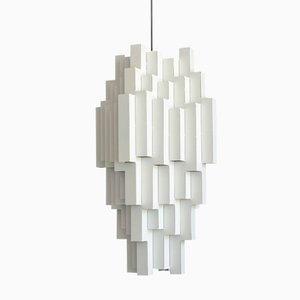
Calmares I Lampe von Tom Strala, 2010

Italienisches Zwei-Sitzer Maralunga Sofa von Vico Magistretti für Cassina, 1980er

Italienische Blaue Stehlampe, 1980er

Snow Hängelampe von Vico Magistretti für Oluce, 1974
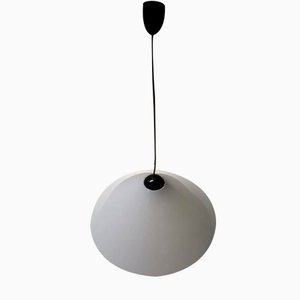
Kleine Italienische Eclisse Tischlampe aus Weißem Metall von Vico Magistretti für Artemide, 1960er

Mid-Century Maralunga Ledersessel und Ottomane von Vico Magistretti für Cassina

Vintage Maralunga Sofa von Vico Magistretti für Cassina, 1973

Wandlampen von Vico Magistretti for Artemide, 1961, 2er Set
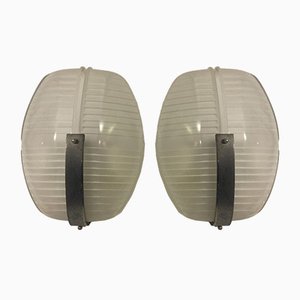
Maralunga Sofa von Vico Magistretti für Cassina, 1974

Cetra Hängelampe von Vico Magistretti für Artemide, 1964
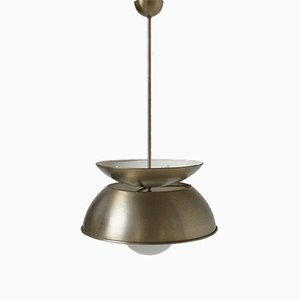
Maralunga Zwei-Sitzer Ledersofa von Vico Magistretti für Cassina, 1970er

Stühle von Vico Magistretti für Cassina Carimate, 1970er, 4er Set
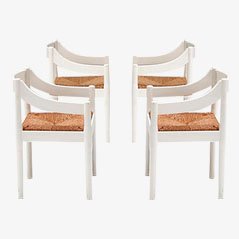
Modell 898 Sofa von Vico Magistretti für Cassina, 1963

Maralunga Sofa von Vico Magistretti für Cassina, 1970er

Dalú Tischlampe von Vico Magistretti für Artemide, 1960er

Modell Maralunga Sofa von Vico Magistretti für Cassina, 1970er

Vintage Demetrio 70 Couchtisch von Vico Magistretti für Artemide

Dunkelbraune Gaudi Stühle von Vico Magistretti für Artemide, 2er Set
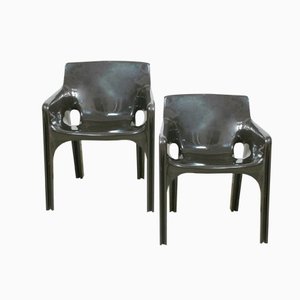
Selene Stühle von Vico Magistretti für Artemide, 1970, 4er Set
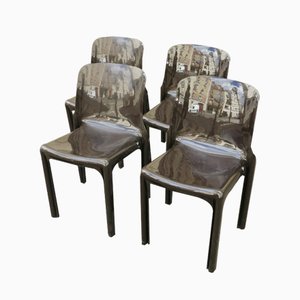
Vintage Maralunga 2-Sitzer Sofa von Vico Magistretti für Cassina

Veranda Sofa von Vico Magistretti für Cassina

Carimate Stühle von Vico Magistretti für Cassina, 4er Set

Vicario Stuhl von Vico Magistretti für Artemide
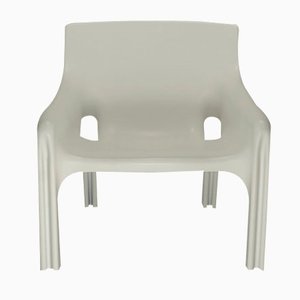













 Jeff Zimmerman Chandelier
© Kevin Mertens for L'AB/Pamono
Jeff Zimmerman Chandelier
© Kevin Mertens for L'AB/Pamono

